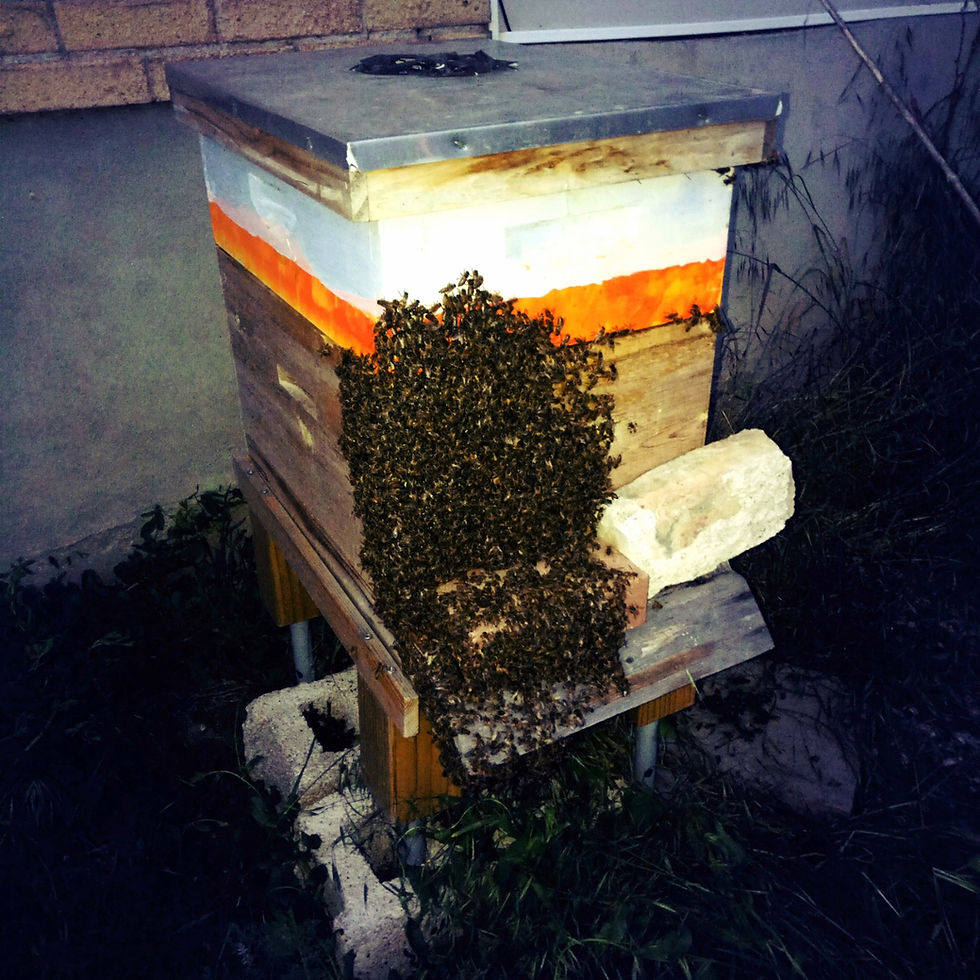Summer Management: Bearding and Backfilling
- Peter Somers
- Jul 3, 2021
- 3 min read
Dried out linden blossoms mark the end of the nectar flow for most the valley. Bees only store about a two-week supply of pollen, so a decline in jelly production soon follows. The queen is fed less so her activity slows down. Expansion hits a wall as summer dearth sets in and the hive population peaks.
This is an interesting development in the colony's annual cycle. The greatest number of workers is realized at the same time demand for labor plummets. Dearth puts thousands of bees out of work and sends the hive's economy into a deep recession. Less foragers are needed to collect from a dwindling supply of pollen. Less workers are needed to receive and process any incoming nectar. Comb builders are no longer needed, and even the nursing staff gets hit with layoffs.

Some of these bees might find work as guards or undertakers, but most will be furloughed. Their only contribution becomes the heat they produce while standing in the way of those who still have a job to do. So the unemployed gather in a cluster outside the entrance. Bearding is not the result of excess heat in the hive but a means to prevent it. If it was too hot in there, they'd be fanning the entrance or gathering more water to help cool things down.
Adding a box may reduce bearding, because it serves the same purpose. It lowers the bee density inside the hive. Shade may also reduce bearding by increasing the hive's capacity for additional heat. But these interventions aren't necessary, and they don't really change anything. Bearding is not something to fix.
Inside the hive, the sharp reduction in egg-laying results in empty brood cells. This opens a gap between the brood nest and food stores. Workers close this gap by uncapping and relocating honey or depositing nectar into newly vacated brood cells. In this case, backfilling the brood nest supports colony contraction and is not the indication of an impending swarm.
A person may run to get away from something or run to catch-up to it. In the same way, there exists opposing reasons for backfilling the brood nest. Either the colony is expanding or it's contracting. Making that distinction is easy, because the central characteristic of a swarming colony is rapid expansion, which is not associated with summer dearth.
Anti-swarm measures, such as checkerboarding the frames to create more space between the combs, directly oppose the objectives of a colony whose population has already peaked. Working against the bees not only sets them back but may also cause an elevated and unwelcome response when the hive is opened on next inspection.
Knowing when and how to intervene is the ultimate beekeeping skill, and it can never be fully mastered. There are many opinions about what the beekeeper should do in any given situation, and much of it is solid advice. This makes it easy to overlook the option to do nothing, which may be the best option. In the case of summertime bearding and backfilling, and anytime there is uncertainty about the next best move, the beekeeper shall rest best when it is remembered that less is often more.
Note: The guidance offered here assumes the natural environment and may not apply to a colony under the influence of an artificial nectar flow. It's my opinion that summer dearth is a valuable phase in the colony life cycle and should be preserved.

Comments